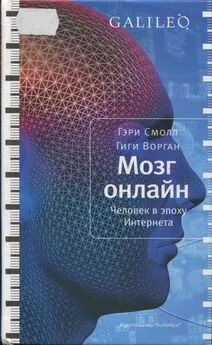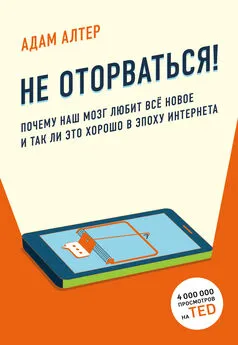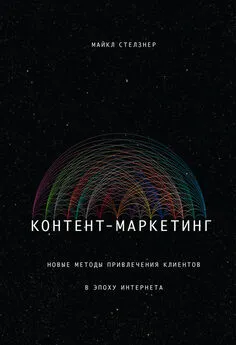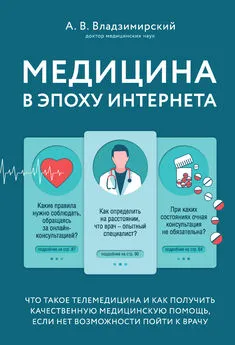Гэри Смолл - Мозг онлайн. Человек в эпоху Интернета
- Название:Мозг онлайн. Человек в эпоху Интернета
- Автор:
- Жанр:
- Издательство:КоЛибри
- Год:2011
- Город:Москва
- ISBN:978-5-389-02224-9
- Рейтинг:
- Избранное:Добавить в избранное
-
Отзывы:
-
Ваша оценка:
Гэри Смолл - Мозг онлайн. Человек в эпоху Интернета краткое содержание
Сегодня мы уже не можем себе представить жизнь без компьютеров и Интернета. Каждый день возникают все новые и новые гаджеты, которые во многом определяют наше существование — нашу работу, отдых, общение с друзьями. Меняются наши реакции, образ мышления. Известный американский психиатр, профессор Лос-Анджелесского университета и директор Научного центра по проблемам старения Гэри Смолл вместе со своим соавтором (и женой) Гиги Ворган утверждают: мы наблюдаем настоящий эволюционный скачок, и произошел он всего за пару-тройку десятилетий!
В этой непростой ситуации, говорят авторы, перед всем человечеством встает трудная задача: остаться людьми, не превратившись в придаток компьютера, и не разучиться сопереживать, общаться, любить…
Мозг онлайн. Человек в эпоху Интернета - читать онлайн бесплатно полную версию (весь текст целиком)
Интервал:
Закладка:
22. Ambrose S.H. Science 2001; 1748-1753
23. De Vries J. The Industrial Revolution and the industrious revolution. The Journal of Economic History 1994; 54:249-270
24. William T.I., Schaal W.E., Burnette A.D. A History of Invention: From Stone Axes to Silicon Chips. Checkmark Books. New York, 2000
25. Levy W.B., Baxter R.A. Using energy efficiency to make sense out of neural information processing. IEEE; IslT 2002, Lausanne, Switzerland, June 30— July 5, 2002, http://ieeexplore.ieee.org/iel5/7942/-21920/01023290.pdf
26. Vandewater E.A., Rideout V.J., Wartella E.A., Huang X., Lee J.H., Shim M.S. Digital childhood: Electronic media and technology use among infants, toddlers, and preschoolers. Pediatrics 2007; 119, p. 006–1015, http://pediatrics.aappublications.org/cgi/content/full/119/5/е1006
27. Roberts D.F., Foehr U.G., Rideout V. Generation M: Media in the lives of 8-18 year-olds. A Kaiser Family Foundation Study. 2005, www.kff.org/entmedia/upload/Generation-M-Media-in-the-Lives-of-8-18-Year-olds-Report.pdf
28. Fox S., Madden M. Generations online. Pew Internet & American Lite Project. December, 2005, http://www.pewinternet.org/pdfs/PIP_Generations_Memo.pdf
29. Thompson C. Meet the life hackers. The New York Times. October 16, 2005
30. Pressner J. C., Baldwin M.W., Dedovic K., et al. Selfesteem, locus of control, hippocampal volume, and cortisol regulation in young and old adulthood. Neuroimage 2005; 28:815-826
31. McEwen B.S. Protective and damaging effects of stress mediators: Central role of the brain. Dialogues in Clinical Neuroscience 2006; 8:367-81
32. Mednick S. C., Nakayama K., Cantero J. L The restorative effect of naps on perceptual deterioration. Nature Neuroscience 2002; 5:67-81
33. Sillence E., Briggs P., Harris P.R., Fishwick L How do patients evaluate and make use of online health information? Social Science & Medicine 2007; 64:1853-1862
34. Small G. W., Silverman D. H. S., Siddarth P., et al. Effects of a 14-day healthy longevity lifestyle program on cognition and brain function. American Journal of Geriatric Psychiatry 2006; 14:538-545
Haier R.J., Siegel B.V., MacLachlan A., et al. Regional glucose metabolic changes after learning a complex visuospatial/motor task: A positron emission tomographic study. Brain Research 1992; 570:134-143
35. Flynn J. R. The hidden history of IQ and special education: Can the problems be solved? Psychology, Public Policy and Law 2000; 6:191-198
36. Kearney P. Cognitive assessment of game-based learning. British Journal of Educational Technolog у 2007; 38:529-531
37. McClure S. М., Laibson D. I., Loewenstein G., Cohen J. D. Separate neural systems value immediate and delayed monetary rewards. Science 2004; 306:503-507
38. Roberts D.F., Foehr U.G., Rideout V. Generation M: Media in the lives of 8-18 year-olds. A Kaiser Family Foundation Study. 2005, www.kff.org/entmedia/upload/Generation-M-Media-in-the-Lives-of-8-18-Year-olds-Report.pdf
39. Bischof H. J. Behavioral and neuronal aspects of developmental sensitive periods. Neuroreport 2007; 18:461-465
40. National Endowment for the Arts. Reading at risk: A survey of literary reading in America: Research Division Report #46. National Endowment for the Arts. Washington, DC, June, 2004, www.nea.gov/pub/ReadingAtRisk.pdf
41. Zimmerman F. J., Christakis D. A., Meltzoff A. N. Television and DVD/video viewing in children younger than 2 years. Archives of Pediatric and Adolescent Medicine 2007; 161:473–479. Dan A. Videos as a baby brain drain. Los Angeles Times. August 7, 2007
42. Friedman T. L The World is Flat: A Brief History of the Twenty-First Century. Farrar, Straus and Giroux, New York, 2005
43. Cunningham F. G., McDonald P. C., Norman P. G. (eds): Williams Obstetrics. 21st ed. McGraw-Hill Medical Publishing, New York, 2001
44. Elkins D. Are we pushing our kids too hard? Psychology Today, 2006, http://psychologytoday.com/articles/pto-20030304-000002.html
45. American Academy of Pediatrics. Children, adolescents, and television. Pediatrics 2001; 107:423-426
46. Ginsburg H. P., Opper S. Piaget’s Theory of Intellectual
Development. 3rd ed. Prentice Hall, Englewood Cliffs, NJ, 1988.
47. Microsoft Corporation. The Market for Accessible Technology — The Wide Range of Abilities and Its Impact on Computer Use, www.microsoft.com/enable/research/default.aspx
48. Madden M. Internet penetration and impact. Pew Internet & American Life Project. April, 2006, www.pewinternet.org/pdfs/PIP_Internet_Impact.pdf
49. Shiu Lenhart A. How Americans use instant messaging. Pew Internet & American Life Project. September, 2004, www.pewinternet.org/pdfs/PIP_Instantmessage_Report.pdf
50. Roberts D.F., Foehr U.G., Rideout V. Generation M: Media in the lives of 8-18 year olds. A Kaiser Family Foundation Study. 2005, www.kff.org/entmedia/upload/Generation-M-Media-in-the-Lives-of-8-18-Year-olds-Report.pdf
51. Niemz K, Griffiths М., Banyard P. Prevalence of pathological Internet use among university students and correlations with selfesteem, the general health questionnaire (GHQ), and disinhibition. Cyberpsycholog у & Behavior 2005; 8:562-570
52. Koezuka N., Koo М., Allison K.R., et al. The relationship between sedentary activities and physical inactivity among adolescents: Results from the Canadian community health survey. Journal of Adolescent Health 2006;39:515-522
53. Grund A., Krause H., Siewers M., Rieckert H., Muller M.J. Is TV viewing an index of physical activity and fitness in overweight and normal weight children? Public Health and Nutrition 2001; 4:1245-1251
54. McGivern R.F., Andersen J., Byrd D., et al. Cognitive efficiency on a match to sample task decreases at the onset of puberty in children. Brain and Cognition 2002; 50:73-89
55. Blakemore S.-J., Choudhury S. Development of the adolescent brain: Implications for executive function and social cognition. Journal of Child Psychology and Psychiatry 2006; 47: 296-312
Den Ouden Frith U., Frith C., Blakemore S.-J. Thinking about intentions. Neuroimage 2005; 28:787-796
56. Abcarian R., Horn J. Underwhelmed by it all. Los Angeles Times. August 7, 2006. Piccalo G. Girls just want to be plugged into everything. Los Angeles Times. August ii, 2006
57. Tun P. A. Fast noisy speech: Age differences in processing rapid speech with background noise. Psycholog у and Aging 1998; 13:424-434
58. Foerde K., Knowlton B. J., Poldrack R. A. Modulation of competing mem— ory systems by distraction. Proceedings of the National Academy of Sciences USA 2006:103:11778-11783
59. Evers M. South Korea turns PC gaming into a spectator sport. Spiegel Online International, http://www.spiegel.de/intemational/spiegel/o,1518,399476,00.html
60. Mori A. Terror of Game-Brain. NHK Books, Tokyo, Japan. 2002. Matsuda G. Hinaki K. Neuroimage 2006; 29:706-711
61. AMA Report of the Council on Science and Public Health. Emotional and Behavioral Effects, Including Addictive Potential, of Video Games, www.ama-assn.org/amai/pub/upload/mm/467/csaph12ao7.doc
62. Nicoll J., Kieffer K. M. Violence in video games: A review of the empirical research. American Psychological Association Annual Meeting. August 2005
63. Kawashima R. Train Your Brain: 60 Days to a Better Brain. Kumon Publishing North America, Teaneck, 2005
64. Haier R. J., Siegel B. V., MacLachlan A., et al. Regional glucose metabolic changes after learning a complex visuospatial/motor task: A positron emission tomographic study. Brain Research 1992; 570:134-143
65. Rosser J. C. Jr., Lynch P.J., Cuddihy L, Gentile D. A., Klonsky J., Merrell R. The impact of video games on training surgeons in the 21st century. Archives of Surgery 2007; 142:181-186
66. Green C. S., Bavelier D. Action video game modifies visual selective attention. Nature 2003; 423:534-537
67. Szajlarski J.P., Holland S.K., Schmithorst V. J., Byars A. W. fMRI study of language lateralization in children and adults. Human Brain Mapping 2006; 27:202-212
68. Small G., Vorgan G. The Longevity Bible. Hyperion, New York, 2006
69. Czaja S. J., Charness N., Fisk A. D., et al. Factors predicting the use of technolog у: Findings from the Center for Research and Education on Aging and Technology Enhancement (CREATE). Psychology and Aging 2006; 21:333–352, www.pubmedcentral.nih.gov/articlerender.fcgi?tool=pubmed&pubmedid=16768579
70. Fox S. Digital divisions. Pew Internet & American Life Project. October 5, 2005, www.pewinternet.org/pdfs/PIP_Digital_Divisions_Oct_5_2005.pdf
71. Cohen G. D. The Mature Mind: The Positive Power of the Aging Brain. Basic Books, New York, 2006
72. Cabeza R., Daselaar S. M., Dolcos F., et al. Taskindependent and task-specific age effects on brain activity during working memory, visual attention and episodic retrieval. Cerebral Cortex 2004; 14:364-375
73. Liu Y., Yu C., Liang М., et al. Whole brain functional connectivity in the early blind. Brain 2007; 130: 2085-2096
74. Théoret Merabet L, Pascual-Leone A. Behavioral and neuroplastic changes in the blind: Evidence for functionally rel— evant cross-modal interactions. Journal de Physiologie (Paris) 2004; 98:221-233
75. Burton H., McLaren D.G. Vi— sual cortex activation in late-onset, Braille naive blind individuals: An fMRI study during semantic and phonological tasks with heard words. Neuroscience Letters 2006; 392:38-42
76. Willis S.L, Tennstedt S.L, Marsiske М., et al. Long-term effects of cognitive training on everyday functional outcomes in older adults. Journal of the American Medical Association 2006; 296:2805-2814
77. Velanova K., Lustig С., Jacoby L.L., Buckner R. L. Evidence for frontally mediated controlled processing differences in older adults. Cerebral Cortex 2006; 17:1033-1046
78. Bartzokis G., Lu P.H., Geschwind D. H., et al. Apolipoprotein E genotype and age-related myelin breakdown in healthy individuals: implications for cognitive decline and dementia. Archives of General Psychiatry 2006; 63:63-72
79. Cabeza R., Anderson N. D., Locantore J. K., McIntosh A. R. Aging gracefully: compensatory brain activity in high-performing older adults. Neuroimage 2002; 17: 1394-1402
80. Helson R., Soto C. J. Up and down in middle age: monotonic and nonmonotonic changes in roles, status, and personality. Journal of Personality and Social Psychology 2005; 89:194-204
81. U.S. Census Bureau Resident Population Estimates of the United States by Age and Sex, http://www.census.gov/population/estimates/nation/intfile2-1.txt
82. Ng B.D., Wiemer-Hastings P. Addiction to the Internet and online gaming. Cyberpsychology & Behavior 2005; 8:110-113
83. Di Chiara G., Bassareo V. Reward system and addiction: What dopamine does and doesn’t do. Current Opinion in Pharmacology 2007; 7:69-76
84. Rau P.-LP., Peng S.-Y., Yang C.-C. Time distortion for expert and novice online game players. Cyberpsychology & Behavior 2006; 9:396–403.
85. Nestler E. J., Carlezon W. A. The mesolimbic dopamine reward circuit in depression. Bio— logical Psychiatry 2006; 59:1151-1159
Читать дальшеИнтервал:
Закладка:









